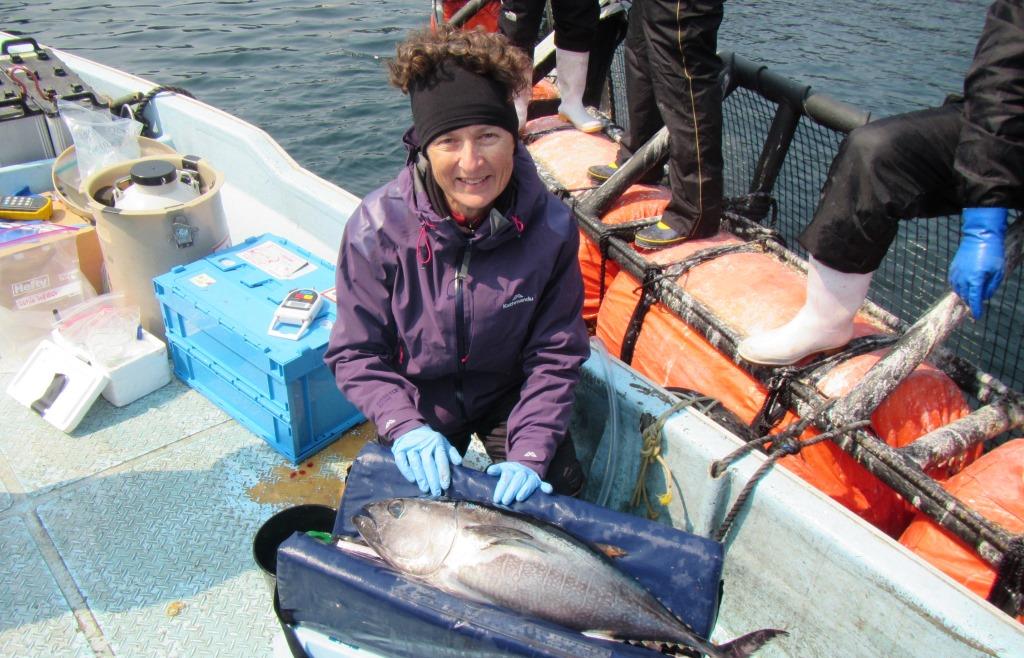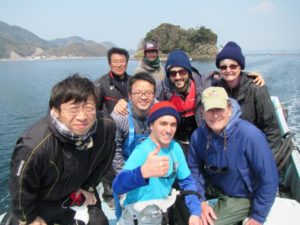
On World Oceans Day, Flinders University marine biologists and other scientists are helping to preserve marine life around the world.
One of the research projects is in building capacity in the production of Pacific bluefin tuna to help curb the decline in wild caught fish.
The Australian-led research is helping to improve technology to increase the success rate of breeding the Northern Hemisphere tuna in captivity and enhance economic relations with Japan.
The popularity of bluefin tuna for sashimi in Japan and the subsequent high market prices have led to serious overfishing, with the species currently considered as vulnerable to extinction.
Biological Sciences researchers Associate Professor Kathy Schuller and Mr Arif Malik are working with Japanese and Californian scientists and tuna farmers to investigate the development of endothermy, or the ability of Pacific bluefin tuna to warm the body using metabolically generated heat.
Endothermy is unusual in fishes but those fishes that have it can spend more time in cooler waters thereby having better access to prey and associated faster growth and sexual maturation rates both of which should give them a survival advantage.
It is possible to breed bluefin tuna in captivity but the success rate has thus far proved underwhelming. One of the key issues with this relative lack of success is due to water temperature and the inability of young tuna to regulate their body temperature.
To breed bluefin tuna, sexually mature males and females are kept together in either sea cages or land-based tanks. When water temperatures become warm enough, around 25°C, the fish spawn by releasing sperm and eggs. The fertilised eggs are then maintained in a hatchery with regulated warm water temperatures.
When the eggs hatch, the fish larvae continue to develop in the hatchery until they metamorphose into young juvenile fish. The temperature in the hatchery is maintained to be warm (at about 25oC) because the larvae and young-of-the-year juveniles cannot tolerate cold water temperatures.

The research team found that the largest Pacific bluefin tuna specimens collected (60cm from snout to tail) could maintain body temperatures up to 14oC in excess of the surrounding water temperature. In contrast, smaller specimens (40cm from snout to tail) could elevate their body temperature by only 5oC and even smaller specimens (20cm from snout to tail) could not elevate their body temperature at all.
Thus Pacific bluefin tuna juveniles must reach a minimum body size of approximately 40cm from snout to tail (approximately 6 months of age) before they can warm their bodies.
“This information will be useful for stock assessments of wild tunas as well as for captive breeding,” says Associate Professor Schuller, who recently returned from field work in Japan.
“For example, if global warming changes the distribution of warm ocean currents, it will be important to know how this will affect tuna distribution in relation to their thermal tolerances.
“Similarly, it is important for tuna breeders to know when their fish are large enough to be able to survive transfer from the warmer waters of the hatchery to the cooler waters of the open ocean.”
The Flinders researchers collaborated with Dr Takashi Kitagawa at the Atmosphere and Ocean Research Institute of the University of Tokyo. Associate Professor Schuller and selected postgraduate students from Tokyo University carried out biochemical and genetic analyses to map the development of endothermy in the Pacific bluefin tuna specimens collected offshore from Nakatosa (Kochi Prefecture) and Tsushimi Island between Japan and South Korea.
The potential benefits of this research are many. More than 90% of Australia’s southern bluefin tuna is exported to Japan. There is greater demand for the fish than can be supplied.
Successful captive breeding will decrease pressure on wild stocks of fish, allow wild bluefin to regenerate to sustainable levels and bring down the price of sashimi, while providing economic opportunities for the Australian aquaculture industry. So far attempts to breed southern bluefin tuna have not been successful. They too are taken from the wild and fattened in captivity for export.
The project is supported by the Australia-Japan Foundation (AJF). The AJF is Australia’s oldest council supporting people-to-people links underpinning the key bilateral relationship between Japan and Australia. The foundation is supported by the Australian Government Department of Foreign Affairs and Trade.
Read more about World Oceans Day.

